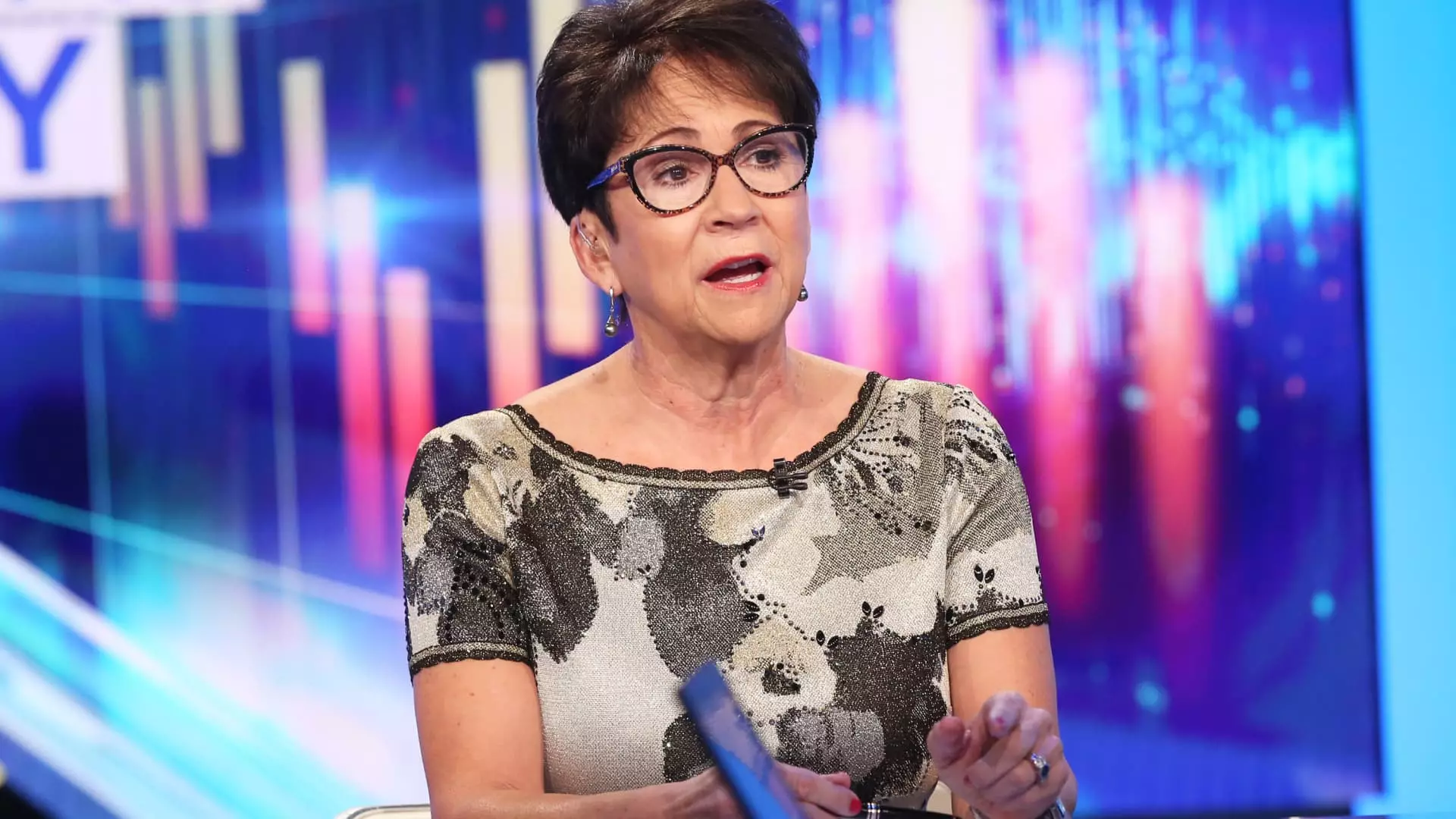In a week filled with market turbulence, Apple’s stock experienced a significant decline of nearly 11%, raising eyebrows among investors and analysts alike. Nancy Tengler, the chief executive officer and chief investment officer at Laffer Tengler Investments, believes that this belly flop may actually represent a golden opportunity for those willing to embrace the long-term potential of the tech giant. Such a perspective is refreshing, particularly in an era where investors often react in panic, flitting from one stock to the next based on fleeting market sentiments.
Despite the tumultuous week, which has seen Apple’s year-to-date loss climb to approximately 15%, there are historical precedents that suggest the tech behemoth bounces back with impressive resilience. Tengler pointed out that previous downturns—most notably the Apple Maps fiasco—saw the stock rocket up by over 1,100% post-crisis. Her assertion that “disappointments” can be the perfect moment to invest reflects a savvy understanding of market behavior that transcends mere speculation.
While the postponement of critical AI-enhancements for Siri until 2026 undoubtedly sounds alarm bells, context is crucial. Apple is not just a tech company; it has evolved into a cultural icon, and icons often have layered narratives. Investors should consider the company’s long-term gameplay, even if short-term jitters may lead to impulsive decisions.
Starbucks: A Triumph of Leadership and Strategy
Transitioning to Starbucks, Tengler suggests that the coffee titan is firmly under the guidance of a capable leader—Brian Niccol—who has already proven his mettle. With Starbucks stock climbing 28% since Niccol’s appointment, it is evident that visionary leadership can transform corporate dynamics. His strategic maneuvers, such as streamlining operations and eliminating unnecessary discounts, have been lauded as pivotal to the company’s resurgence.
Tengler’s assertion that Starbucks embodies a “wait-and-see” investment highlights the virtues of patience and careful planning in the stock market. The company’s history of consistent dividend growth coupled with an optimistic earnings outlook positions it as a sound investment in uncertain times. While the past month has seen Starbucks shares drop around 13%, one must remember that resilience often does not reflect immediate market movements. Instead, it reveals the long-term sustainability and profitability within a business context.
Moreover, as Starbucks continues to adapt to evolving consumer preferences—such as seasonal drinks or ethically sourced coffee—investors might find the downturn unwarranted, especially when anticipating a solid recovery in customer engagement and sales. The company’s ability to maintain relevance in an increasingly competitive landscape speaks volumes about its market position.
Adobe: A Value Trap in Waiting
In stark contrast to Apple and Starbucks, Adobe’s recent performance has stirred skepticism and concern. Following a quarterly report that, while exceeding estimates, failed to ignite investor confidence, its stock plummeted by over 12%. Tengler referred to Adobe as a “value trap,” indicating that this tech stalwart may have some underlying weaknesses that investors cannot afford to ignore.
One has to wonder whether Adobe’s evasive management and uncertain AI strategy are alleviated by its pricing power. After years of stagnation in raising prices, the lack of a clear direction on how the company plans to monetize its AI capabilities casts doubt on future growth. This becomes especially concerning given the ever-growing competition in the tech sector, where agility and innovation are paramount. If Adobe is perceived as lagging in its strategic execution, investors are likely to remain skeptical until there is concrete evidence of recovery.
In a market where the stakes are high, companies like Adobe demonstrate that even giants can falter when they drift from a clear value proposition. Without proactive measures to restore investor trust, Adobe may face uphill challenges moving forward.
Overall, the contrasting fortunes of these three companies provide valuable lessons on the importance of market context, leadership, and clarity of vision in investment decisions. While Apple and Starbucks appear to have potential upside, Adobe’s situation serves as a stark reminder of the risks that come with investing in companies that may be losing their way.

